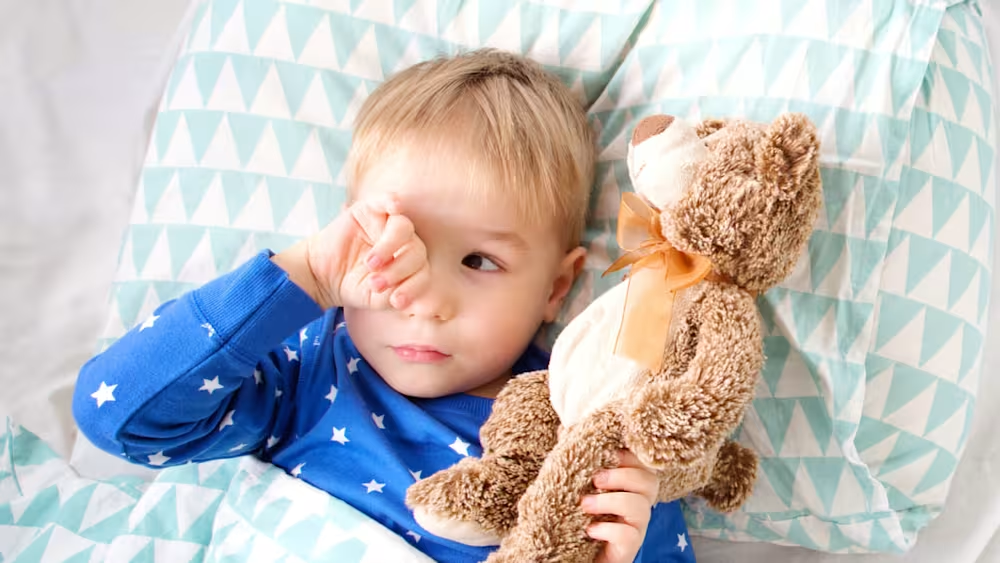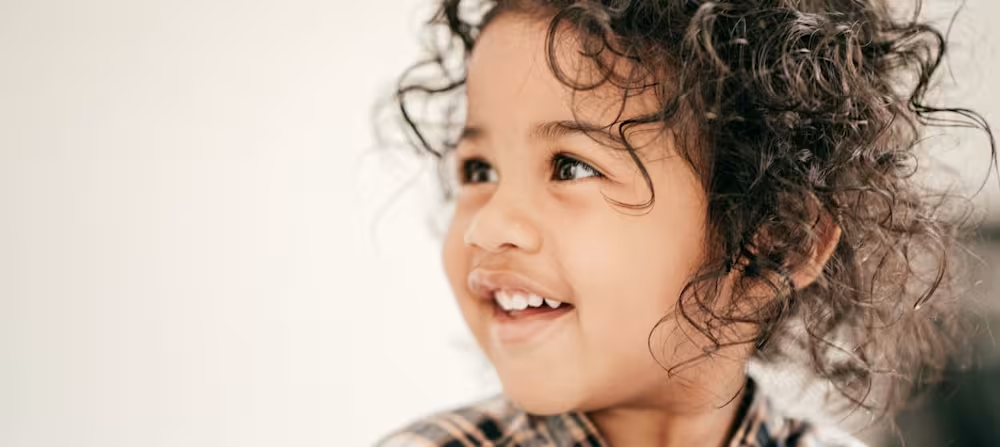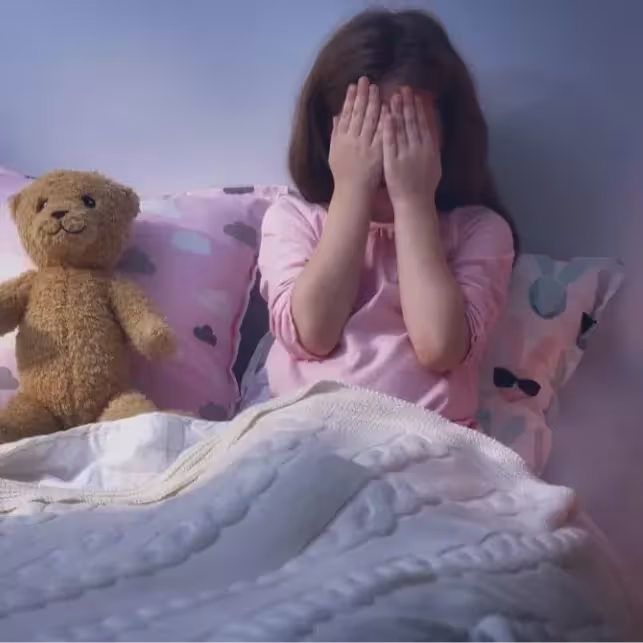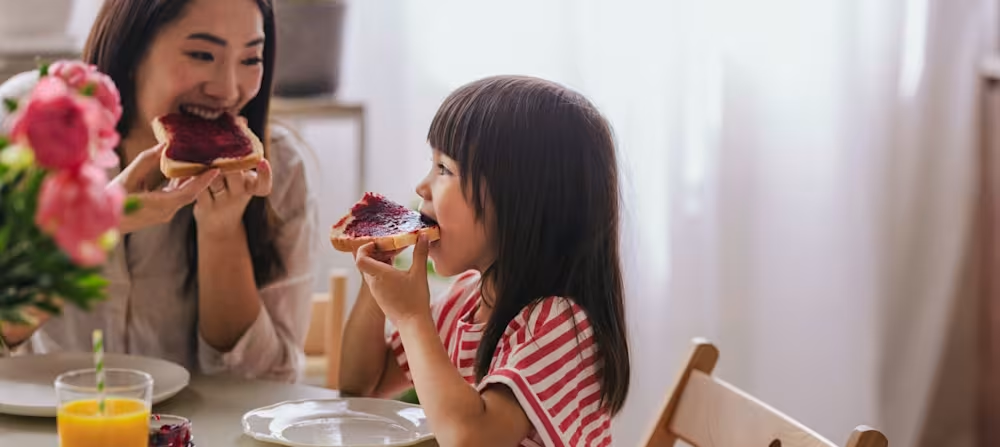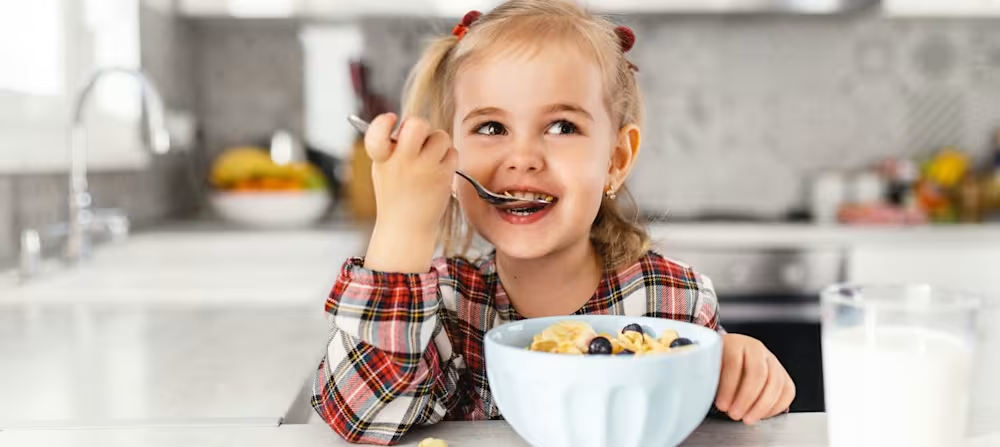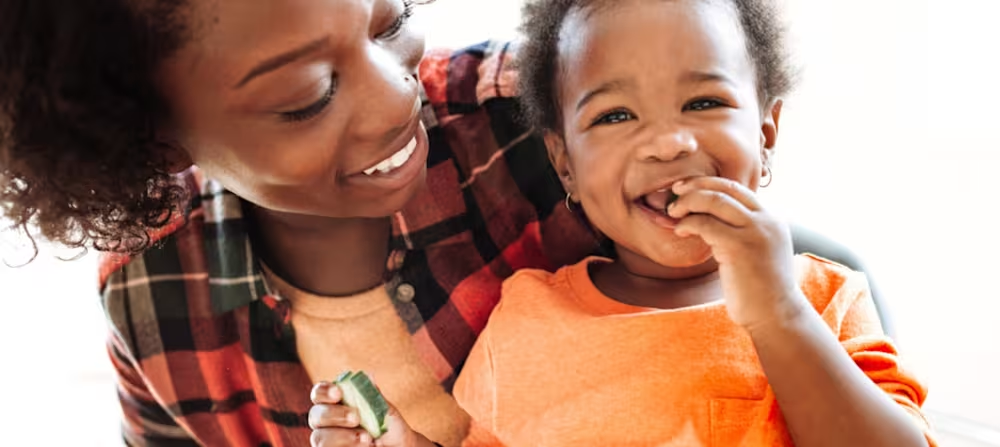3 year old milestones: Development, growth, speech, language, and more
Updated Dec 29, 2025
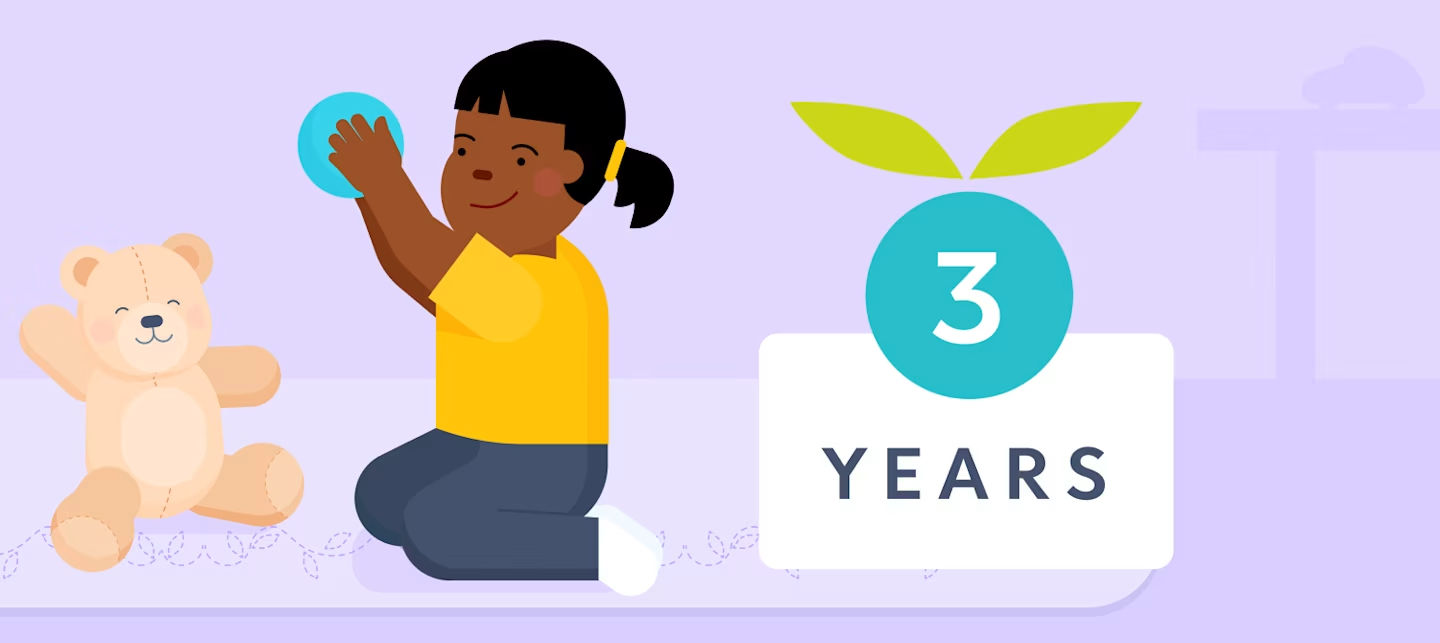
When your baby reaches 3 years old, you’ve got a preschooler on your hands! Expected 3 year developmental milestones typically include increasing independence, speaking clearly, and playing with other children.
In this blog post, we’ll look at the physical, social, and speech development you can look for in your child. There’s also a useful 3 year old development checklist, tips for helping your child flourish, and an idea of 3 year old milestones you should expect to talk over with your child’s healthcare provider.
Editor's note
When we discuss babies and development at Huckleberry, we use their adjusted age (vs. actual age) which can still impact growth beyond toddlerhood. Keep in mind that kids don't all hit 3-year milestones at the same time. There's a range of what's normal for growth and development at this age. Usually, the milestones listed here are met between ages 3 and 4. If you're worried about how your child is growing or if they might be a bit behind, it's a good idea to chat with their doctor.
Table of Contents
3 year old milestones at a glance
Development:
Between 3 - 4, your little human is leveling up in the game of life. They may have already mastered running and jumping and may start working on motor milestones like standing on one foot for a few seconds or throwing a ball overhand. Their developing fine motor skills enable them to be more self-sufficient, though they still have a long way to go before they’re ready to move out. At this age, most 3 year olds are learning to dress themselves and wash and dry their hands. (Though not without copious reminders, unfortunately.)
Typical 3 year old speech and language development includes expanding expressive language skills. Between 3 - 4, kids can typically use 500 - 900 words [] and may be able to hold a back-and-forth conversation with a few exchanges. Socially, your 3 year old is learning to share and play with other kids.
Sleep:
On average, we recommend aiming for per day. This could include an afternoon nap, but 3 is a common age for naps to end. Continue to offer a midday rest time so your kiddo has the chance to nap if they need to do so. On days your preschooler skips their nap, you’ll want to offer an earlier bedtime to help limit overtiredness.
Keep in mind that kids differ in how much sleep they need, and what's normal can vary. While there are general guidelines for how many hours they should sleep, it's really helpful to also monitor mood and energy levels to figure out what works best for them.
Maintaining a normal can help your child wind down and get ready for sleep. At 3, helpful bedtime practices include giving your child opportunities to assist in getting their pajamas on, brushing their teeth, and picking a story to read.
Feeding:
In general, a tends to drop [] around this age. It’s not uncommon for them to eat one regular meal and then prefer to consume the rest of their daily calories with small meals and snacks. Your child is likely in a phase of wanting to negotiate over what to eat at every meal. It can be helpful to offer healthy choices to give them a sense of control. For example, “Would you like an apple or some yogurt for a snack?”
Continue to offer healthy beverages like milk and water. The American Academy of Pediatrics [] recommends 16 - 24 ounces of cow’s milk and 8 - 40 ounces of water per day until age 5. When possible, avoid sugary drinks like flavored milk that offer little nutritional value.
Growth:
3 year olds grow at different rates and are not expected to grow as fast as they did in their first year. On average, 3 year old boys and girls have a weight gain of about 4 - 6 pounds per year. They might grow about 2 - 3 inches in height per year [].
Remember that growth patterns are largely determined by genetics, so around 3 it’s common for there to be noticeable height and weight variance between children of the same age. The important thing is to make sure your 3 year old’s growth is consistent. Your child’s healthcare provider will plot their height and weight on a chart to ensure they’re growing at a regular pace and to identify any health trends that need attention.
3 year development milestones
Physical development
Gross motor skills
Agility: 3 year gross motor milestones are typically building on the skills your little one has been working on for a while. Kids tend to run and jump [] easily at 3 years old, when they were possibly just learning to jump [] at around 2 years. Moving both forward and backward with agility is another 3 year old milestone. The American Academy of Pediatrics [] also suggests that a 3 year old can hop and stand on one foot for up to 5 seconds. They can also tip-toe!
Ball skills: While 3 year olds might not be soccer stars quite yet, their ball skills are likely improving. Your child may kick a ball forward [] and also throw a ball overhand while playing. Most of the time they will likely catch a large ball that’s thrown to them well. If it’s another 3 year old throwing the ball that might not be the case!
Tricycle: Learning to pedal a tricycle [] is a 3 year old gross motor skill. Your little racer might start cycling around!
Fine motor skills
Dress themselves: Most 3 year olds are able to dress and undress themselves. It might take a while, but they can do it! Your child should be able to manipulate zippers and snaps at this age. However, buttons and laces [] might still be tricky.
String things together: This is the age when your child might make you a macaroni necklace! 3 years is the age when children are expected to be able to string things together [] — like large beads and hollow pasta shapes.
Wash and dry hands: 3 year fine motor activities include the ability to wash and dry hands on their own. Even if you want to help them, this is the age where they likely demand to “do it myself.”
Communication
Hold a conversation: Typical 3 year old language development means you’re able to have conversations with your child! Children at this age are expected to use at least two back-and-forth exchanges []. Most speak well enough for others to understand, at least most of the time.
At the younger end of 3, you might expect sentences of at least 3 - 5 words. By age 4, this generally progresses to 5- to 6-word sentences [] or more.
Ask questions: Here come the questions! You’ll likely get lots of questions every day from your 3 year old. At this age, children are asking plenty of “who,” “what,” “where,” and “why” questions. They will likely be simple questions like “Where is my ball?” or “Who is that?” when seeing new people.
Say first name: Most 3 year olds are able to say their first name when asked []. They may also refer to themselves by their first name.
Memorize songs and rhymes: 3 year old speech milestones also typically include learning simple songs [] and rhymes like “Itsy Bitsy Spider” and “Twinkle Twinkle Little Star.”
Social development
Emotional development
Separation anxiety: By the age of 3, children are generally able to calm down within 10 minutes [] after you leave them, like at a preschool or childcare drop off.
Interaction with other children: While most children play alongside other children (called parallel play []) at 2, at 3 years kids typically notice other children and now join them to play. At this age, your preschooler may begin to share toys and learn how to take turns.
Uses the bathroom: At 3, most kids are able to enter the bathroom on their own [] to pee. Typically they will need some assistance wiping when it comes to pooping.
Cognitive development
Drawing: As their hand-eye coordination improves, 3 year olds might be able to draw a circle [] if you demonstrate it for them. They might not be quite ready to color inside the lines yet. Most can draw straight lines with ease as well.
Colors and numbers: They can correctly name some colors and recognize numbers. At 3 years old, children also typically understand the concept of counting [].
Behavioral development
Temper tantrums: At 3, most children are having less frequent temper tantrums [] and are learning how to handle their emotions. Helping your little one name their feelings can help prevent tantrums and might be a productive way to work through emotions like frustration, anger, and sadness.
Big helpers: At home, encourage your child to try to do as much for themselves as possible — brush teeth, get dressed, comb their hair, help prepare food, etc. These activities help build fine motor skills and also give them a feeling of accomplishment. It’s important to be a cheerleader for your 3 year old and let them know that you’re pleased by their talking, stories, and help. A little encouragement goes a long way!
3 year development milestones checklist
It’s helpful to remember that not all 3 year milestones will be reached by kids at the same time. There is a wide spectrum of normal when it comes to children's growth and development at 3 years old. The milestones below will typically be reached between the ages of 3 - 4. If you have any concerns about your child’s growth or potential development delays, it’s best to have a conversation with their healthcare provider.
Speaks well enough to be understood, most of the time
Knows 500 - 900 words
Pedals a tricycle
Throws a ball overhand
Dresses themselves
Washes and dries hands
Strings objects together
Says first name when asked
Knows simple songs and rhymes
Shares and is learning to take turns
Draws a circle after being shown how
Easily draws straight lines
Correctly names some colors
Recognizes some numbers and understands the concept of counting
Has less frequent temper tantrums
What are development red flags at 3 years?
There's a spectrum of normal when it comes to 3 year old milestones. However, there are some signs that may warrant a conversation with your child's pediatrician. Here are some of those instances []:
Frequently falls or struggles when using stairs
Drools often or speaks in a way that’s hard to understand
Has difficulty using simple toys (like puzzles, peg boards, or handles)
Doesn’t follow simple instructions
Isn’t speaking in sentences yet
Avoids or rarely makes eye contact
Doesn’t engage in pretend or make-believe play
Shows little interest in playing with toys or other children
Loses skills they previously had
You know your child best! If you have any concerns about their development, reach out to their healthcare provider.
5 development tips for 3 years
Tip | Why it helps | What to try |
|---|---|---|
Support problem solving | At 3, kids become more capable of reasoning and working through simple challenges. Guiding them through the process builds confidence and cognitive skills. | When a problem pops up, like a missing toy, prompt them to think aloud: “Where did you see it last?” Help them try a few idea, instead of solving for them. |
Label feelings | Kids at this age understand more emotions but still need help naming and managing them. Clear language supports emotional regulation and empathy. | Narrate feelings in the moment: “It looks like you’re frustrated,” or “You feel sad right now.” Encourage soothing strategies, such as hugging a favorite toy. |
Count every day | Everyday counting builds early numeracy, attention, and sequencing long before formal math skills emerge | Count objects during routines: apples into a bag, steps on the stairs, crayons, buttons, fingers, or toys. Follow your child’s curiosity and keep it playful. |
Try animal-action play | Movement supports physical development, coordination, and imagination, and helps direct extra energy in positive ways. | Give prompts like “hop like a bunny" or “crawl like a bear." Let them invent their own animals and movements for more creativity. |
Offer simple choices | Limited choices help reduce power struggles, support autonomy, and give 3 year olds an age-appropriate sense of control. | Offer two good options: “Green sweatshirt or yellow jacket?” “Brush teeth first or wash hands first?” Keep choices predictable and not overwhelming. |
Find more details below:
Tip #1: Support little problem solvers
Try encouraging your child to solve problems on their own, with your support. Part of helping them learn and grow is encouraging them to understand a problem and then think of possible solutions. Help your 3 year old try out a solution then attempt another if necessary. For example, if they can’t find their favorite stuffed animal, help your child brainstorm possible places it could be. Encourage them to retrace their steps to locate it. This is good for brain development and will make your little problem-solver so proud!
Tip #2: Label feelings
Though are likely less frequent at 3, children this age are still working on managing and labeling their emotions. Help teach them to manage stressful feelings by giving them words to explain how they’re feeling and encourage positive behavior, like hugging a favorite toy when they’re upset.
Tip #3: Count it out
Play counting games with your 3 year old! Children in this age group are starting to learn numbers and understand the concept of counting. You can turn almost anything you see into a counting activity. It doesn’t have to be complicated — count buttons on a shirt, crayons in a box, body parts, etc.
Tip #4: Animal action
Physical activity is healthy for children's brains and bodies. One way to get your 3 year old moving is to give them prompts: jump like a frog, trot like a horse, stomp like an elephant. Turn it into a game and see how many fun movements and facial expressions they can come up with.
Tip #5: Offer choices
At 3 years old, your child likely tries to negotiate about most aspects of the day: what they wear, what they eat, and certainly when they sleep. When it comes to these potential power struggles, try offering healthy, reasonable choices to give them a feeling of control. For instance, “Would you like to wear the green sweatshirt or the yellow jacket?” or “Do you want to brush your teeth first or use the bathroom first?”
Activities for a 3 year old child
1. Rolling in dough
Playing with playdough is fun and builds fine motor skills too. Encourage your little one to press it, pinch it, roll balls, make skinny “worms,” or just squish it. Building hand and finger strength will be used for skills like writing and cutting.
2. Story time
Encourage your developing 3 year old to tell stories! Around 3, children are usually able to tell a story on their own [] and also contribute to a story they’re being told by another person. Telling stories is important for brain development as well as language and emotional development. It can help them practically sort out and solve problems and give them a sense of identity. Stories also serve as a great window into what your child thinks about.
3. Just dance
Turn on some tunes and dance! Dancing is fun and it’s also great for developing coordination, balance, and motor skills. There’s even research that suggests a strong connection between rhythm skills and pre-reading abilities in toddlers []. Listening to music can help teach 3 year olds new sounds and words.
4. Let’s pretend
It’s exciting to see 3 year olds use their imaginations while playing! At this age, make-believe play might look like pretending to be doctors or pirates, building forts, and using gestures, mimes, and unrealistic objects to further their play. Encourage pretend play by letting your 3 year old play with dolls, cars, utensils, and the like.
5. Art it up
While it’s still important to give your 3 year old creative freedom (within reason) when they’re doing art activities, at this age you can also begin to help them draw simple shapes and lines. You can even help them make their first stick figure by drawing a circle and then connecting lines to make a “body.” Make it a social-emotional learning moment by drawing different facial expressions on your stick figures and labeling them as “sad,” “happy,” “scared,” etc.
Caring for a sick child at 3 years
When your kiddo isn’t feeling well, it can be stressful for both of you. Most common illnesses are mild, but keeping your child comfortable, hydrated, and well-rested is key. The following tips can help you support your child while you monitor for any signs that may need medical attention:
Hydration: Encourage frequent sips of water. Popsicles can help if they are reluctant to drink.
Nutrition: Offer small, frequent meals. Appetite may be lower than usual.
Fever: Call your pediatrician if your child's fever lasts more than 24 hours or repeatedly goes over 104°F (40°C) []. If their doctor recommends it, children’s Tylenol or Motrin may be used. Avoid cough and cold medicines, as they’re not safe for young children.
Adjust sleep routines: Illness often means more night waking or changes in naps — like taking them again, even if they usually don't. Allow your toddler the extra rest they need now and return to regular routines once they’re better.
Provide comfort: Some children want extra closeness when sick, while others may prefer more space. Follow their lead to help them feel secure. Remember, caring for a sick child can be tiring — lean on your support system when possible.
Hygiene: Encourage handwashing, and cover coughs or sneezes to prevent spreading illness.
When to seek help
If your child has a fever for more than 24 hours or it reaches above 104°F (40°C), call their doctor right away. These can be signs of a more serious infection or illness and it's best to rule out anything that needs medical attention.
In general, if something feels off or you’re worried about how your child looks or acts, it’s safest to check in with their doctor. And if you already talked to them but symptoms appear worse, that’s a good time to check back in too.
Takeaway: Development milestones for 3 year olds
3 year olds are active! At this age, their gross motor milestones typically include running and jumping easily as well as learning to pedal a tricycle. Typical 3 year fine motor milestones include being able to mostly dress themselves, wash their hands, and even string things together. At 3, kids are becoming more self-sufficient but still need plenty of caregiver supervision and support.
Expected 3 year old language development and speech milestones include asking a lot of questions, being able to hold a short conversation, and giving their first name when asked. Your child is also likely to learn simple rhymes and songs, especially through repetition.
Typical 3 year old emotional development usually includes getting better at sharing and taking turns. Kids this age typically start to enjoy playing with other children. Temper tantrums are expected less frequently, but don’t be surprised if they still happen here and there.
3 year milestones mark a period of exciting development for children. They learn and grow every day! These are general guidelines for 3 year old milestones and it’s perfectly normal if your child isn’t doing all of these things just yet. Keep in mind that development is on a spectrum. However, if you notice any red flags or have concerns about any development delays, consult with your child’s provider.
If you're curious about what lies ahead in the coming years, glimpse into the future to see what you might experience once your baby is a . Take a look back at how far your baby has come by revisiting what they may have been like as a .
3 year old development milestones FAQ
Share article:
Note: The content on this site is for informational purposes only and should not replace medical advice from your doctor, pediatrician, or medical professional. If you have questions or concerns, you should contact a medical professional.
12 Sources
Table of Contents
Share article:


